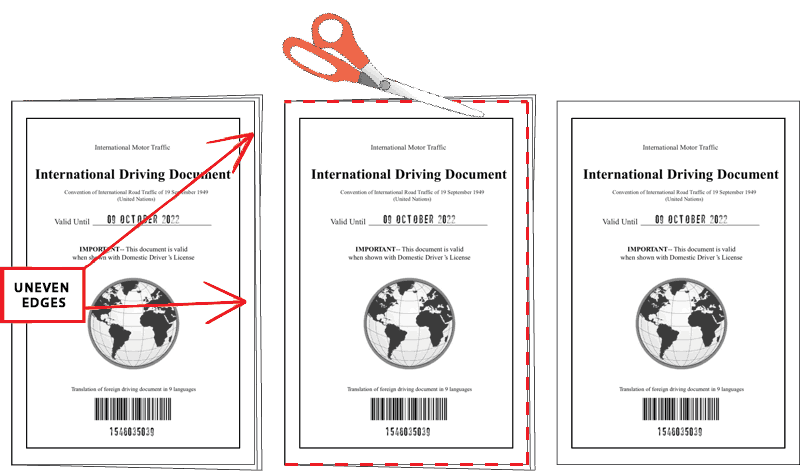Introduction
In today's digital age, technology plays an essential function in the management of various elements of our lives. One location where technology has actually revealed remarkable capacity remains in the management of Internally Displaced Individuals (IDPs). The plight of IDPs often emerges from conflict, natural catastrophes, or systemic discrimination, leading to substantial obstacles in offering them with needed support. This short article explores how innovative innovations can help address these difficulties, enhance processes, and improve the overall management of IDPs.
Utilizing Technology To Manage IDPs
The management of IDPs needs robust frameworks that can adjust to their evolving requirements. Utilizing innovation to handle IDPs enables organizations and federal governments to react more effectively by leveraging data analytics, mobile applications, and blockchain technology. Through these tools, stakeholders can supply better services, track displacement patterns, and improve communication with afflicted populations.
1. Comprehending the Concept of IDPs
Internally Displaced Persons (IDPs) describe individuals who have actually been forced to flee their homes however remain within their nation's borders. Unlike refugees who cross international limits, IDPs face unique obstacles associated with legal securities and access to assistance. Comprehending these characteristics is vital for reliable management.
1.1 The Causes of Internal Displacement
Internal displacement can come from different aspects:
- Armed Conflict: Ongoing wars or civil unrest lead many people to leave their homes. Natural Disasters: Earthquakes, floods, and other disasters force communities to evacuate. Development Projects: Infrastructure tasks may displace populations without sufficient payment or resettlement plans.
1.2 The Impact of Internal Displacement on Communities
The effects on displaced persons are profound:
- Loss of Livelihoods: Numerous lose their tasks and ways of support. Psychological Injury: The experience of displacement can lead to psychological health issues. Social Fragmentation: Communities might end up being fragmented as households are separated.
2. Present Obstacles in Managing IDPs
Managing IDP populations provides several obstacles for federal governments and humanitarian organizations:
2.1 Absence of Accurate Data
Without accurate information about the number and area of IDPs, it becomes hard to designate resources effectively.
2.2 Inadequate Communication Channels
Many displaced people lack access to reputable details regarding available support services or safe https://vimeo.com/1053158409/7930a3d7b8 areas.
2.3 Coordination Amongst Stakeholders
Multiple organizations often work separately; coordination is crucial for efficient reaction efforts.
3. Role of Innovation in Addressing Challenges
Technology uses options that can help overcome these hurdles:
3.1 Information Analytics for Better Decision-Making
By making use of information analytics platforms, companies can analyze patterns in displacement patterns, assisting them make informed choices about resource allocation.
3.2 Mobile Applications for Real-Time Details Sharing
Mobile apps can facilitate interaction in between displaced individuals and aid organizations-- providing updates on available resources or safe locations.
3.3 Blockchain Innovation for Transparency
Blockchain technology promotes openness by firmly taping deals associated with help circulation-- making sure that resources reach those who need them most.
4. Case Studies Demonstrating Reliable Usage of Technology
Several efforts worldwide showcase how technology has actually effectively managed IDP crises:
4.1 The United Nations' Usage of Geographic Details Systems (GIS)
The UN employs GIS technology to map displacement patterns precisely; this help in preparing interventions efficiently.
4.2 The Role of Social Network Platforms in Crisis Communication
Social media has proven invaluable for real-time updates throughout crises-- helping companies communicate rapidly with affected populations.
5. Strategies for Implementing Innovation Solutions
To successfully apply technology in handling IDP scenarios:
5.1 Engaging Local Communities
Local neighborhoods must be involved in establishing tech services; they understand their needs best.

5.2 Making sure Accessibility
Ensuring that technological solutions are accessible to all sectors of the population is essential-- consider language barriers and literacy levels.
6. Future Trends in Technological Solutions for Handling IDPs
As we look ahead:
6.1 Expert system (AI) Enhancements
AI could further improve predictive analytics regarding displacement trends-- helping companies prepare for crises before they escalate.
6.2 Increased Collaboration Throughout Borders
Global partnership could cause shared databases and resources that enhance actions throughout regions experiencing similar challenges.
7. Conclusion: A Call for Ingenious Approaches
The management of Internally Displaced Individuals requires a multi-faceted approach including sophisticated technological options tailored particularly for their needs-- making it crucial for federal governments and companies alike to invest time and resources into these innovations.
FAQs
Q1: What need to I do if I am an internally displaced person? A1: Seek help from regional NGOs or government agencies devoted to helping displaced individuals discover shelter and resources.
Q2: How does innovation improve interaction among help agencies? A2: Innovation enhances information sharing through platforms that allow real-time updates regarding readily available services or modifications in conditions impacting IDPs.
Q3: Can I get a worldwide motorist's license online while being displaced? A3: Yes! Numerous countries provide online services where you can get a worldwide motorist's license even if you're presently displaced; just check your regional regulations!
Q4: What are some examples of mobile apps designed for IDP assistance? A4: Apps like "Refugee Friend" offer info on available services while "Catastrophe Emergency" supplies alerts throughout crises impacting your area!
Q5: How does blockchain guarantee transparency in aid distribution? A5: Blockchain records deals firmly so that every help distribution is traceable; this decreases corruption threats making sure resources reach those who need them!
Q6: Exist particular technologies being established for usage in Spain regarding internal displacement? A6: Yes! Various local NGOs are collaborating with tech companies to produce applications focused on helping internally displaced individuals particularly within Spain's unique context.
In conclusion, making use of technology offers unmatched opportunities when handling Internally Displaced Persons efficiently-- it's not merely about reacting faster however customizing solutions that appreciate human dignity while resolving complicated logistical obstacles head-on!